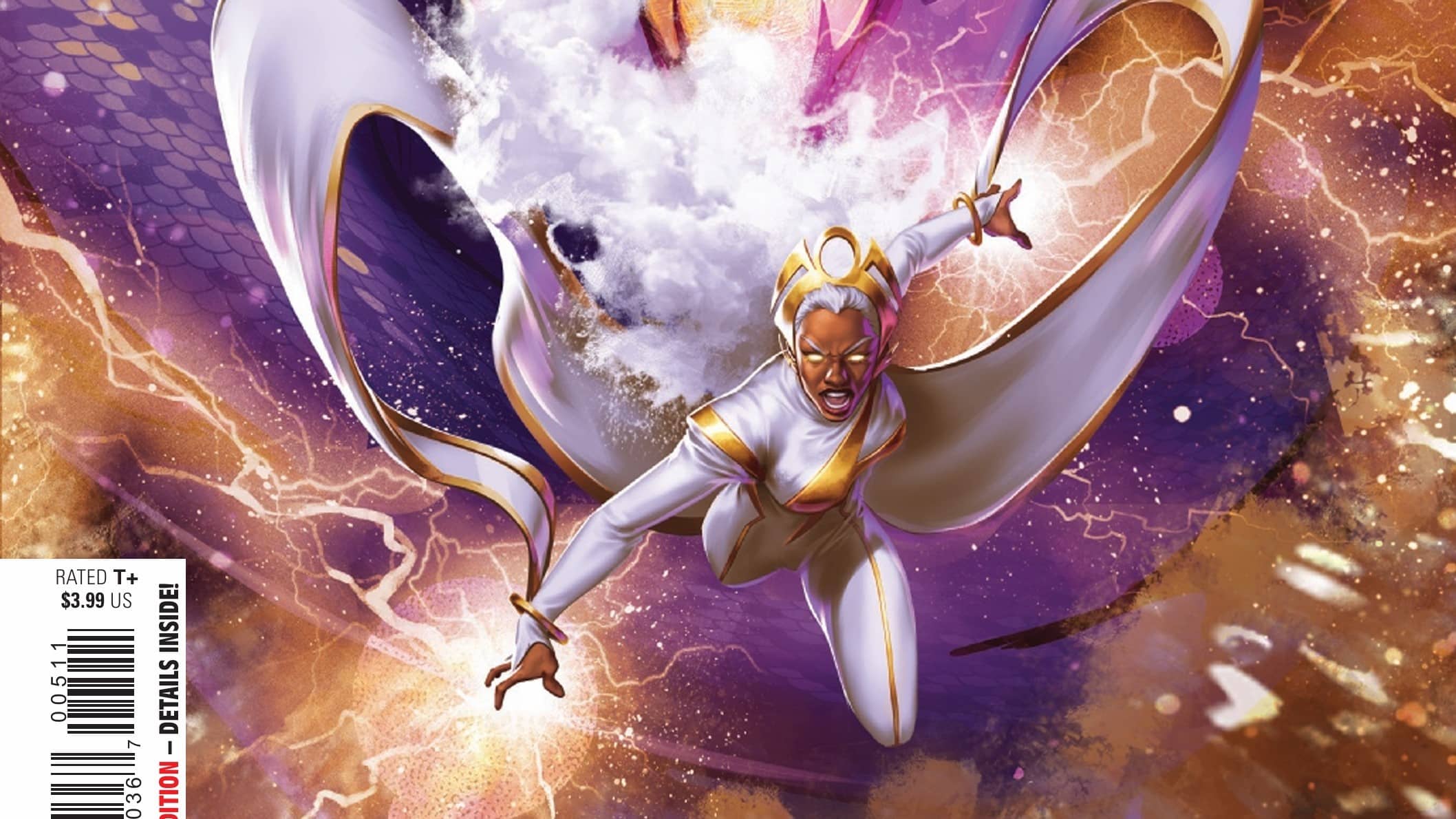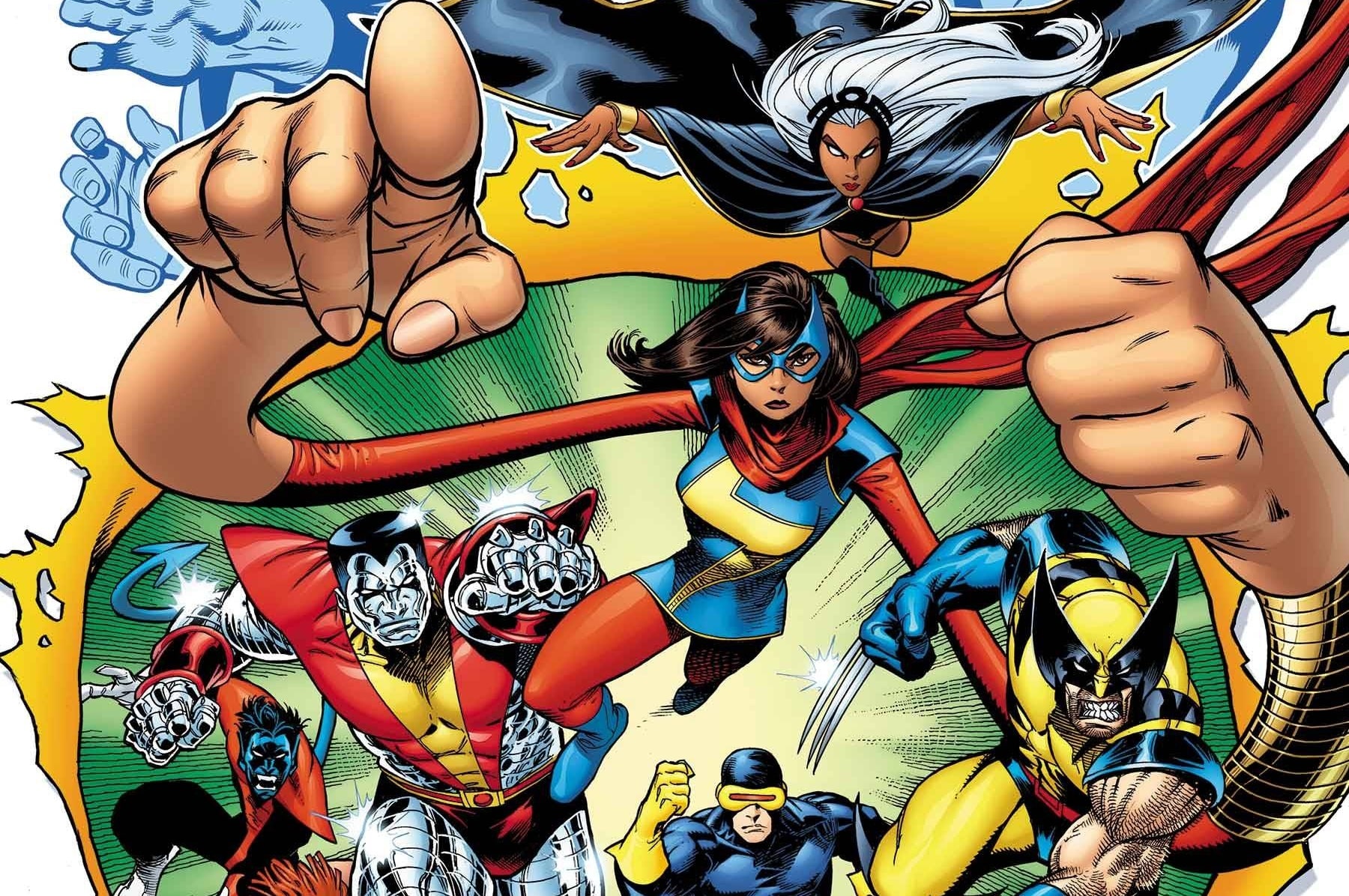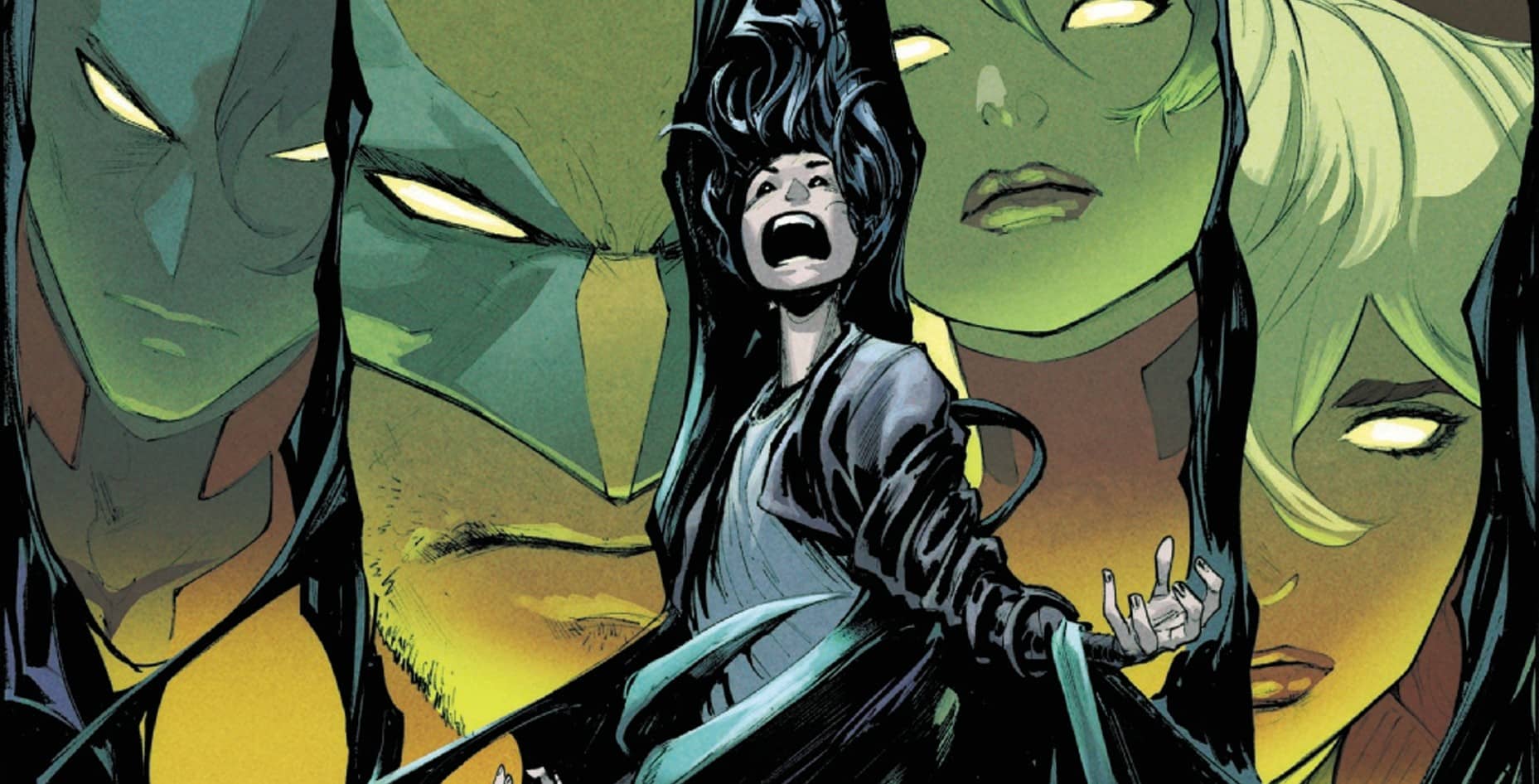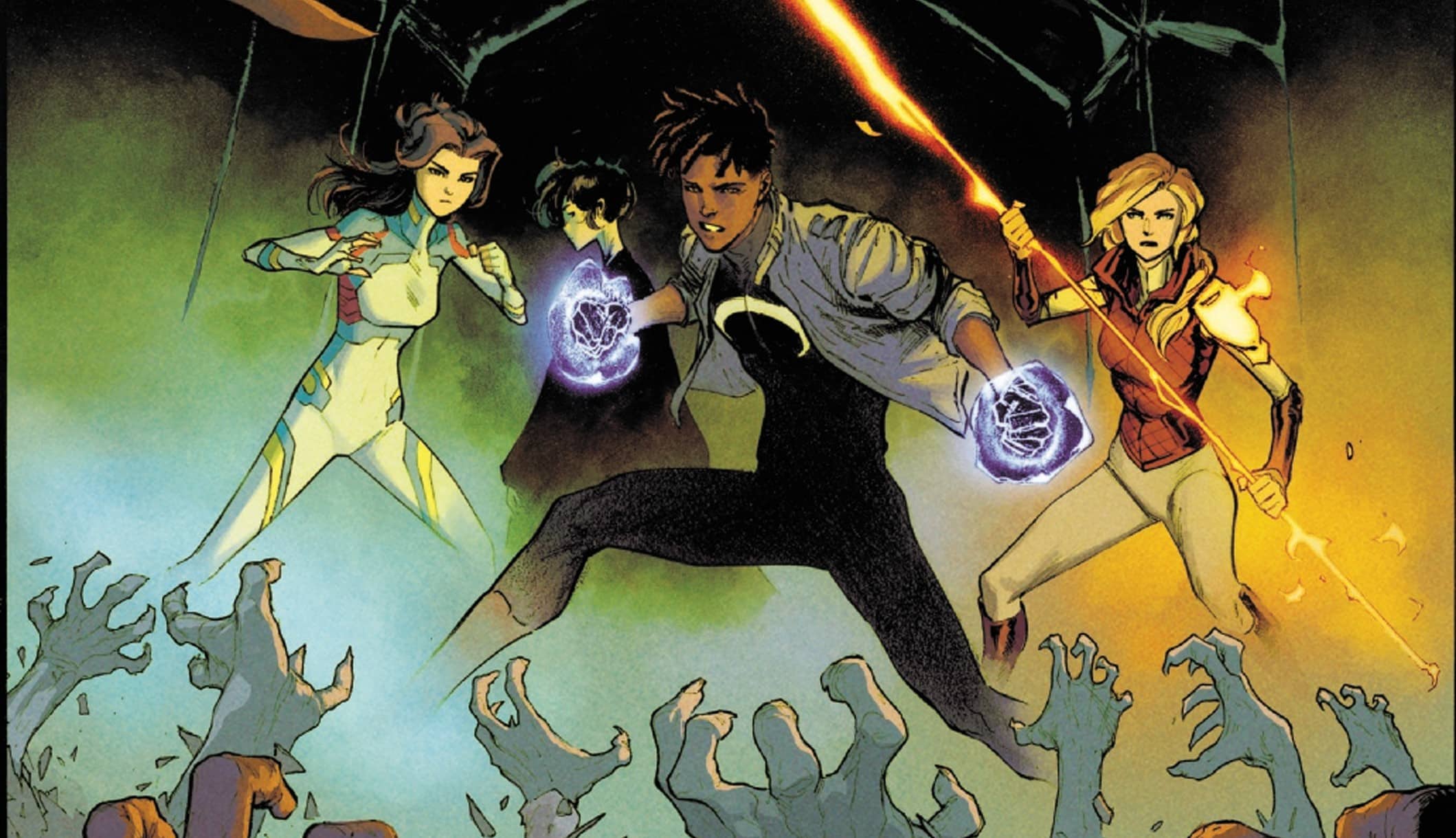Trivial is the fight with Doctor Doom, Sorcerer Supreme. For in a realm beyond our own, in the Dimension of Manifestations, a trial by combat brews between Eternity (the physical embodiment of our universe) and Oblivion (the physical embodiment of the void). The fate of our universe is at stake. Who shall fight on behalf of our universe if not Ororo Munroe, the Eternal Storm? Storm #5 is written by Murewa Ayodele, drawn by Lucas Werneck, colored by Alex Guimaraes and lettered by Travis Lanham.
In another time, in another life (I’ve lived so many lives), I served on a board that oversaw renovations of historic buildings. And while the nature of the work probably doesn’t interest you (you’re here for Storm, not my resume), maybe this little tidbit will: See, in order to qualify for loans and grants, historically relevant parts of the building had to remain intact. In some cases, this meant retaining architectural flourishes like floors, fireplaces and archways. But often, too often, this only required leaving a facade. The entire building could be completely gutted and retrofitted, but as long as part of the exterior generally looked like it did 100 years ago, then the project was in compliance.
This made for an interesting, “Ship of Theseus” paradox: Is the building, stripped of everything inside, still the building? What makes a thing a thing if its innards are completely replaced?
Hold on to that thought.
__________
If nothing else, Storm #5 has ambition. About half of the work is a metaphysical, metaphorical rumination on the nature of existence, starring Eternity and Oblivion. We witness part of a never-ending, (very) one-sided competition between brethren for the pleasure of hosting Death: Oblivion, where her deeds can harm no one (since she would be surrounded by nothing), and Eternity, which would give her an infinite (but not Infinity, different persona!) amount of matter to feed on.
What’s more natural and right for Death: nullification or amplification?
If this kind of question makes you ponder the depths and meanings of existence, then this is the comic for you. If you skimmed over what you just read with glazed over (or rolling) eyes, then, well, this isn’t. Whether this is for you or not, one thing is certain: This isn’t a very Storm-centric Storm comic. I’m not sure she’s even in a third — a quarter? — of the panels. When she is, she’s completely voiced and controlled by Eternity. Goaded into one final confrontation with Oblivion, Storm, either by virtue of her virtues, her (convenient) death or some other combination of comic book logic, has been chosen as the next (and presumably last) avatar of Eternity, imbued with enough power-scaling powerups to make a Grey or Summers blush. She’s been recruited in yet another fight to the death for the fate of Death, with all existence resting on her shoulders.
That’s one hell of a job to sign up for. Too bad, yet again, she didn’t sign up for any of this.
From the beginning of this series, Storm’s vocal agency — the ability to articulate her own thoughts and desires — has been conspicuously missing. Here, it’s not just that she doesn’t speak for herself: She doesn’t act for herself. Upon resurrection, neither her actions nor her words are hers; they’re Eternity’s. Without her permission, and quite possibly against her will, Storm makes short work of Eegun, of Doombots and, presumably, would have made short work of Doom himself, had she not forcibly taken control of her body back.
(A question to ponder: Was it her asserting her agency, or was it Doom, in his role as Sorcerer Supreme, pushing her consciousness to the forefront to save himself? Probably the former, but the latter is absolutely a Doom thing to do.)

The last image we have of Storm finds her in the fetal position, crying, surrounded by nature’s most notorious killers.
The idea of being an avatar in the Marvel Universe can be many things: played for jokes, as it is with Asani and Miles; a point of pride, as it is for Bast and T’Challa; a perilous burden, as it is for Khonshu and Moon Knight or Galactus and the Silver Surfer.
Storm’s “power” was forced upon her; she does not have control of her body or her words; while not in control of her body, she was forced to do things she almost certainly would not have done; at the end of the experience, she looks spent, hurt, shocked and alone.
It is very hard to look at this through any other lens than assault, and it’s unclear how readers are to react to this.
This analogy — and it seems pretty clearly telegraphed that this is an intended reading of these events — isn’t necessarily bad; comics can be a great medium for talking about tough things because of the use of analogies. But what isn’t clear is whether the team has the desire or bandwidth to talk about (or acknowledge) these tough things with the care and consideration they need. A failure to do anything considerate with this — to simply make her a willing vessel who enjoys power at the expense of her autonomy and comfort — would neuter the application of that analogy to this character.
It’s very possible she’s an exasperated but willing participant, doing what she wants to, needs to do. But stripped of her voice, with only (always excellent!) images to telegraph her emotions, then what other conclusion can readers reasonably come to?
____________
When we’d complete those renovations, the name of the projects always referenced the old building, but rarely kept the name intact. They’d be called something just a little different, in juxtaposition to buildings that were a lot different on the inside.
So, I guess, here’s to the Eternal Storm. May we meet her and learn from her. May she be more than a facade upon which creators imbue their power fantasies at the expense of her autonomy. May she be allowed to tell her own tale, forge her own path and find her own way to happiness … and healing.
Hopefully.
Buy Storm #5 here. (Disclaimer: As an Amazon Associate, ComicsXF may earn from qualifying purchases.)
A proud New Orleanian living in the District of Columbia, Jude Jones is a professional thinker, amateur photographer, burgeoning runner and lover of Black culture, love and life. Magneto and Cyclops (and Killmonger) were right. Learn more about Jude at SaintJudeJones.com.






